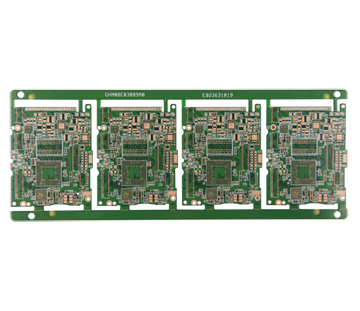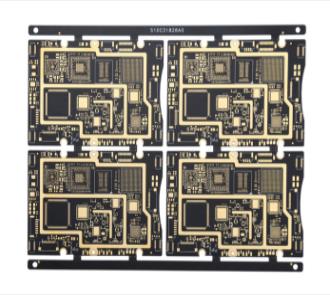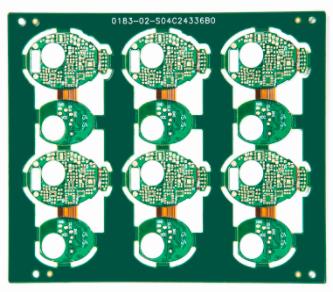
Various Prevention Methods of Silver Dipping Process in Circuit Board Factory
Circuit board manufacturers, circuit board designers and PCBA manufacturers will explain various prevention methods of silver dipping process in circuit board factories
The small editor of the circuit board factory introduced the following five common shortcomings of silver dip plating on multilayer circuit boards. Through the field research of solution manufacturers, equipment manufacturers and PCB circuit boards, some prevention and improvement methods have been found, which can provide solutions to problems and improve the yield of multilayer circuit board factories. They are described below:
1. Multi layer circuit board Giavanni copper biting
This problem must be traced back to the copper electroplating process. It is found that in the case of deep hole copper plating and blind hole copper plating with high thickness diameter ratio, if more uniform copper thickness distribution can be provided, this phenomenon of Giavanni copper biting can be reduced. In addition, the stripping and etching of copper by metal inhibitors (such as pure tin layer) in the manufacturing process of multilayer circuit boards, once excessive etching occurs and there is side etching phenomenon, it may also produce slit and hide electroplating solution and micro etching solution.

In fact, the biggest source of Jafani's problem is the green paint project, in which the side erosion and film relief caused by green paint are most likely to cause cracks. If the green paint can cause positive foot residue rather than negative side erosion and harden after the green paint is thoroughly applied, the lack of such Giavanni copper biting can be eliminated. As for the copper electroplating operation, it is necessary to make the copper electroplating in the deep hole more uniform in the strong stirring. At this time, it is also necessary to use ultrasonic wave and strong current (Eductor) to help stir, so as to improve the mass transfer of the bath solution and the distribution of copper thickness. As for the silver dipping process of PCB, the micro etching copper biting rate of its front end should be strictly controlled, and the smooth copper surface can also reduce the existence of fine seams after green paint. Finally, the silver bath itself should not have too strong copper biting reaction. The pH value should be neutral, and the plating rate should not be too fast. It is better to cut the thickness as thin as possible, and the anti discoloration function can be done well under the optimized silver crystal.
2. Improvement of Color Change of Multilayer Circuit Board
The improvement method is to increase the coating density and reduce its porosity. The packaged products must be sealed with sulfur free paper to isolate oxygen and sulfur in the air, thus reducing the source of discoloration. In addition, the temperature in the storage area should not exceed 30 ℃, and the humidity should be lower than 40% RH. It is better to adopt the policy of "first in first use" to avoid problems caused by too long storage.
3. Improvement of Ion Contamination on PCB Surface of Multilayer PCB
If the ion concentration of the silver bath can be reduced without affecting the quality of the coating, the amount of ions carried out by the plate and attached to it can be naturally reduced. During the cleaning after immersion, it must be rinsed with pure water for more than 1 minute before drying to reduce the attached ions. In addition, the cleanliness of the finished boards should also be checked regularly to ensure that the residual ions on the PCB surface are minimized and meet the industry specifications. All tests shall be recorded for future use.
4. Improvement of Copper Exposed on Silver Surface of Multilayer Circuit Board
Various processes before silver immersion should be carefully controlled. For example, after micro etching the copper surface, pay attention to the detection of "water break" (water break refers to water repellency) and the observation of special bright copper spots, which indicate that there may be some foreign matters on the copper surface. The clean copper surface with good micro etching must be kept upright for 40 seconds without water breaking. The connecting equipment should also be maintained regularly to maintain its water uniformity, so that a more uniform silver coating can be obtained. During the operation, it is also necessary to continuously conduct DOE experiment plan tests on copper dipping time, liquid temperature, stirring, and pore size to obtain the best quality silver plating layer. For the silver dipping process of thick plates with deep holes and HDI micro blind hole plates, external assistance of ultrasonic wave and intensifier can also be used to improve the distribution of silver layer. The extra strong stirring of the bath solution can improve the wetting and exchange ability of the yao water in the deep hole and blind hole, which is of great help to the whole wet process.
5. Improvement of Solder Joint Microholes in Multilayer Circuit Boards
Interfacial micro holes are still the most difficult defect to be improved by silver immersion plating at present, because the true cause of their formation has not been revealed yet, but at least some related reasons can be determined. Therefore, the occurrence of downstream welding micro holes can also be reduced by minimizing the occurrence of relevant factors.
Among the relevant factors, the thickness of the silver layer is the most important. It is important to reduce the thickness of the silver layer as much as possible. Secondly, the micro etching of pretreatment shall not make the copper surface too rough, and the uniformity of silver thickness distribution is also one of the key points. As for the organic content in the silver layer, it may be inversely learned from the purity analysis of the silver layer sampled at multiple points that the content of pure silver shall not be less than 90% atomic ratio. Circuit board manufacturers, circuit board designers and PCBA manufacturers will explain various prevention methods of silver dipping process in circuit board factories.









